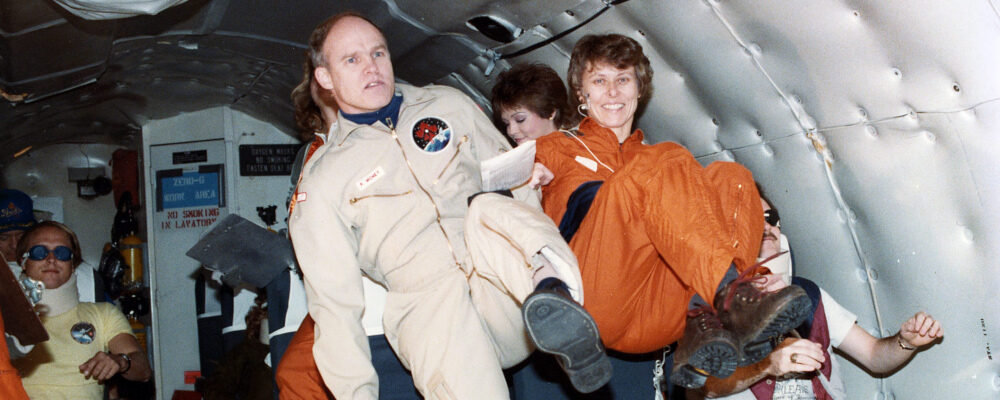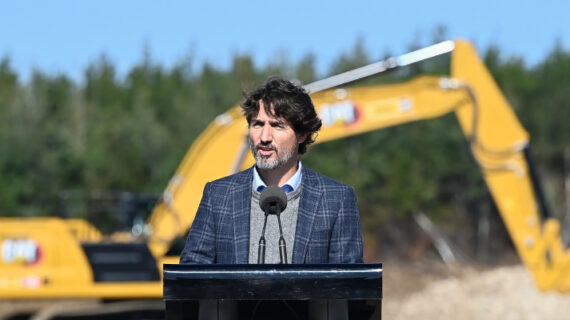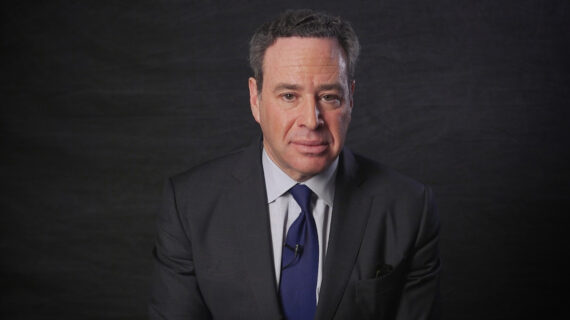It was called the Precision Angular Mover. PAM for short. Ken Money, the man who operated it, asked if I would like to give the contraption a try. He had American astronauts and Soviet cosmonauts do it in their training before going into space. Money was a scientist, a top expert on motion sickness, and once a week he even subjected himself to it and it always resulted in getting sick to his stomach. PAM was this convoluted thing in which the human subject tumbled around head over heels at a rapid clip—rapid doesn’t do it justice—and in total darkness yet. Trust me, the rollercoasters at Canada’s Wonderland have nothing on this.
“I don’t think so,” I said and it was a wise decision.
Money passed away last month at the age of 88. Over the years I wrote a few articles about him, the first after he was selected as one of Canada’s original six astronauts back in the 1980s. The six included Marc Garneau, the first Canadian to fly in space. But Money was the only member of the group who never made it into space despite being the most qualified. Even Garneau told me that. Indeed, if central casting had offered up the perfect candidate for an astronaut in this country it would have been Ken Money. The checklist was impressive, to say the least.
Jet pilot? Check. He held the rank of Major—Major Ken Money—with the Canadian Armed Forces and flew regular missions for his RCAF squadron, collecting thousands of hours in the cockpit.

Scientist? Check. A world-class physiologist with a Ph.D.—Dr. Ken Money—and leading expert on the vestibular system which involved the organ of balance in the inner ear and all the requisite neurology that goes with it. As mentioned, he routinely worked with both Americans and Russians.
Inventor? Check. He authored over a hundred scientific papers and invented a surgical procedure called semi-circular canal plugging that would be used in hospitals all over North America and Europe to cure certain kinds of dizzy spells.
How about Olympic athlete? Check. At the age of 19 he finished fifth in the high jump at the 1956 Olympic Games in Melbourne, Australia. When he got older he was still an athlete, a world-class badminton player in the over-60 category who would place first and second in the annual tournament held in the United States.
Ken Money had the right stuff and then some. Jet pilot. Renowned scientist specializing in disciplines directly related to space travel. Athlete. Looking back I’m sure if he was American he would’ve flown on the Space Shuttle and been a lock for one of those SpaceLab missions. SpaceLab was a reusable laboratory developed by the European Space Agency that was used on Shuttle flights. But Ken Money was not American. He was Canadian and worse an Anglo-white male from Toronto. He did back up Canada’s first woman astronaut, Roberta Bondar, in 1992, but he never actually flew into outer space. It was a SpaceLab mission no less. More on that later.
The last time I wrote about him was in May 2000 for The National Post when he was receiving an international award called the Kent Gillingham Award. It was presented by the U.S. Aerospace Medical Association for his contributions to the knowledge of spatial disorientation and situational awareness related to flight.
The folks at NASA loved the guy. He started working with them in 1962 as a scientific advisor. The next year they offered him a job for twice the salary he was making at the Defense Civil Institute of Environmental Medicine (DCIEM), which was connected to the Department of National Defence in Toronto. He turned it down because it would’ve meant giving up flying with his RCAF squadron and besides, his wife had a good job back home as a nurse.
Years later NASA was determined to get him again. They wanted him for research on eye movement in response to weightlessness, but the agency wasn’t allowed to hire foreign nationals employed in national defence capacities. NASA got around that by making him a professor at Brandeis University in Boston and then made a grant to the university to fund the research it wanted him to do. NASA got its man.
In time Money would serve on the board of governors at the National Space Society in Washington, D.C., a pro-space lobbying organization whose members included the likes of actor Tom Hanks. I recall Money telling me about one of those meetings when he met U.S. Vice-President Dan Quayle.
In writing numerous times about Money I found him, despite the accomplishments, modest, humble, and unassuming. Forgive the pun, but he was best described as down-to-earth which might be why he never left it.
I examine the list of Canadian astronauts and there is only one from Toronto. Go through the list again and look for the best of the bunch to fly in space and it’s the same person. Ken Money. The aforementioned Marc Garneau said so himself and so did another astronaut on his Twitter account. Steve MacLean. But Money never flew.
He was a proud Canadian who excelled in his chosen field but as mentioned the closest he ever got to outer space was backing up Bondar on that SpaceLab mission. To rub salt into the wound the mission performed research on how the human nervous system adapts to low gravity, which was precisely the area of Money’s expertise. It didn’t matter.
I once asked him why he never made it and this is what he said: “I didn’t get to fly in space because I was old and ugly and not very good at public relations.”
It may have been tongue-in-cheek. But I did interview people at NASA and the Canadian Space Agency about him and all I ever heard were superlatives. He truly was the man from central casting and I know for a fact his driving ambition was to one day fly in space.
Ken Money not being a spaceman is a bit like saying Celine Dion yells and doesn’t really sing that well. Or Wayne Gretzky was lucky to have so many good players around him. Or Marshall McLuhan didn’t have any original ideas and just happened to be in the right place at the right time.
Indeed, when I think about him there is something that rubs me the wrong way, and for whatever the reason it seems to be something that is distinctly Canadian. This guy should be a member of the Order of Canada. But he’s not. Somewhere there should be a street or school named after him. But that street or school doesn’t exist. Maybe the most tragic thing is that despite the Globe and Mail obituary Canadians never really knew him.
But I did. Ken Money was an incredibly high achiever who reached the absolute pinnacle in his field and possessed not a granule of BS in his makeup. If only the same could be said of his country.




